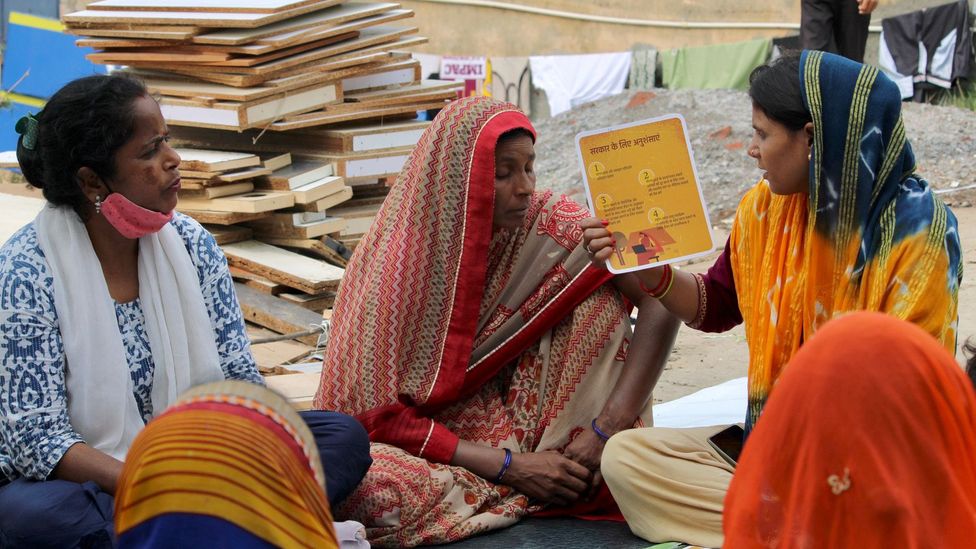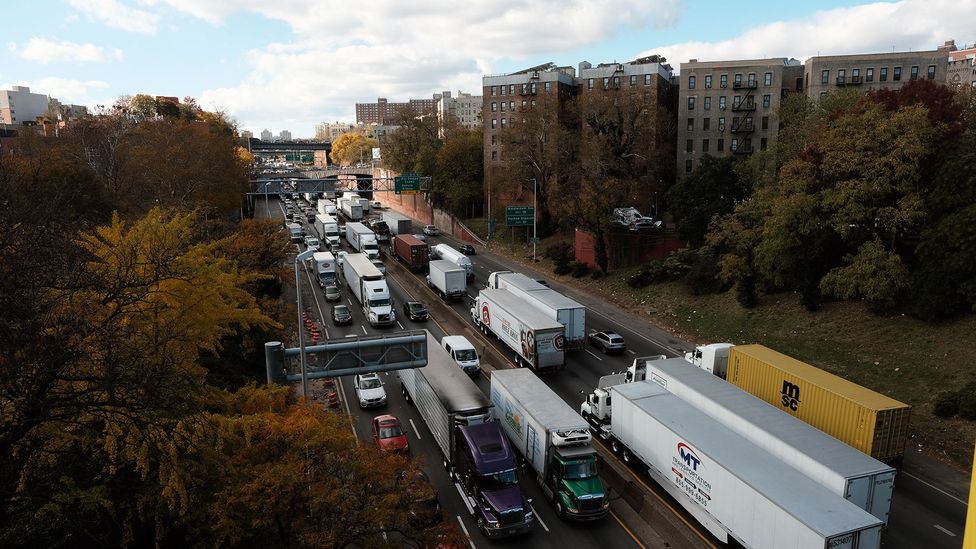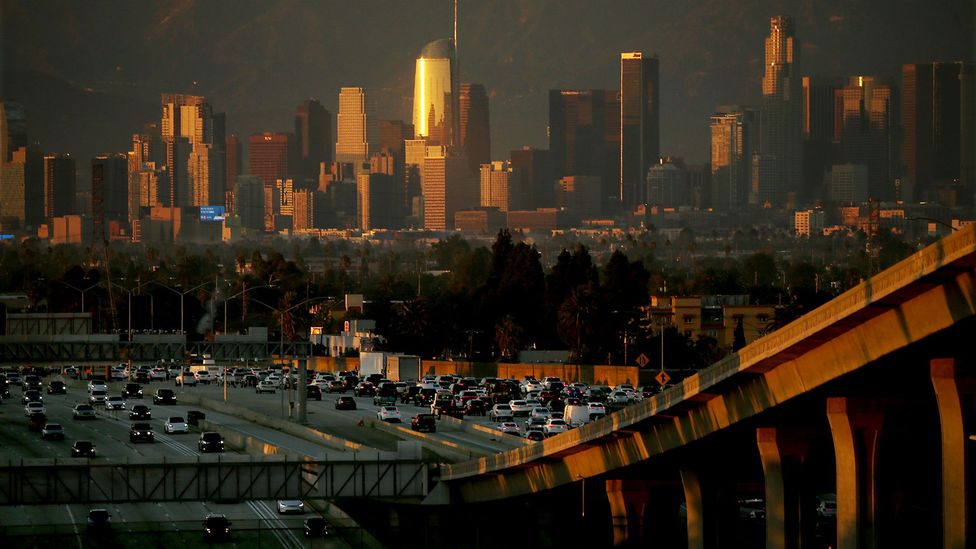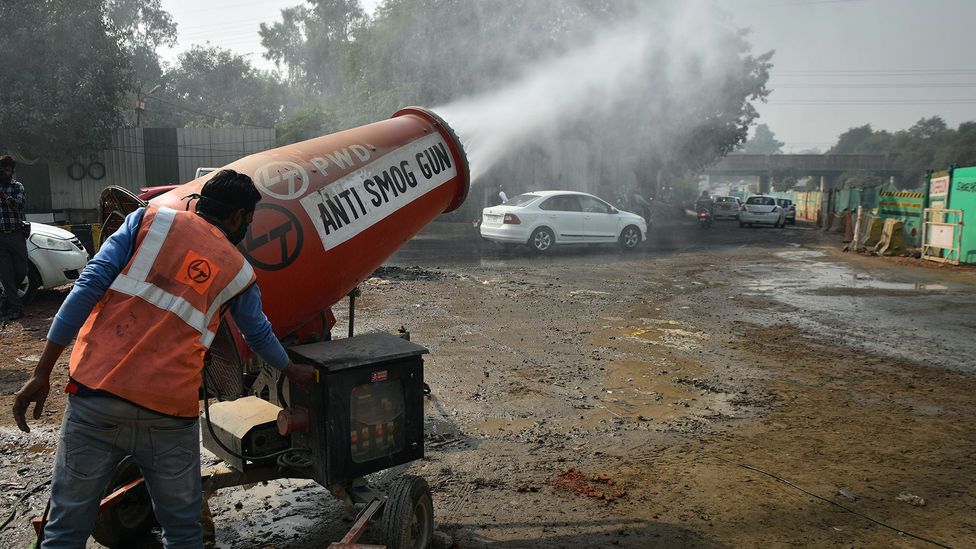Every time Mithilesh turns on her stove to cook, her eyes begin to burn. The small home the 29-year-old housewife shares with her husband, daughter, son and elderly in-laws in the slums of the Indian capital Delhi quickly fills up with smoke, making it hard for anyone to see.
Mithilesh has cooked over a traditional chulha – a metal coated combustor stove that uses firewood as fuel – since she was 13 years old. She often has difficulty breathing and experiences uncontrolled bouts of coughing, reports BBC.
But even when she steps outside her home, there is little respite. Delhi, the world`s second largest megacity, has some of the worst outdoor air quality in the world. Although the authorities in India have been making strides to improve air quality in the city, levels of multiple pollutants regularly exceed World Health Organization (WHO) limits. One recent study published by the Energy Policy Institute at the University of Chicago warned that the lives of residents in India`s capital are being cut short by up to 11.9 years compared to if air pollution was reduced to levels recommended by the WHO.
Mithilesh and her family are an extreme example of something happening globally. Although almost everyone in the world now breathes air that is polluted in some way, those who are worst hit are also the least able to protect themselves or escape from it. The story of air pollution is one of environmental inequality.

Cornerstone is trying to educate women and children in low-income communities in Delhi about the risks of indoor air pollution (Credit: Cornerstone Knowledge Builders)
In an effort to reduce her own exposure, Mithilesh has started using a stove fueled by liquid petroleum gas (LPG) when she cooks inside her home. But it isn`t a cheap option – an LPG cylinder can cost between 1700-1900 Indian Rupees (£17-19/$20-23), out of reach of many households in Mithilesh`s neighborhood, because they don`t have a steady income.
"It`s also a very gendered issue, affecting women the most," says Sweety Sharma, programme manager at Cornerstone Knowledge Builders, an organisation working to create awareness about the hidden effects of indoor pollution in low-income communities in New Delhi. "Women painstakingly collect the firewood from forests everyday and are constantly exposed to those toxic fumes while cooking."
With Cornerstone`s help, Mithilesh has started spreading the word in her own community about how harmful indoor pollution can be for their health.
"Women are taking this more seriously now," she says. "We`ve always brushed off niggling health issues and discomfort while using the firewood stove, but we`re learning not to ignore it. Today, if I cook with the chulha, I take the stove outside my home whenever I can, so that the small space isn`t clouded with smoke. Even outdoors, we wrap scarves around ourselves while we cook so we don`t directly inhale smoke. We use our earnings to prioritise purchasing gas cylinders whenever we can."
Although there are still 2.4 billion people globally who use inefficient fuels such as kerosene, wood, dung, charcoal and coal when preparing food, increasing awareness in this way and supporting the switch to cleaner ways of cooking can make a big difference.
Deaths due to indoor air pollution are estimated to have been in decline over the past two decades as levels of extreme poverty globally have decreased. But a pernicious and far more widespread problem has risen in its place, with modern forms of air pollution, caused by the burning of fossil fuels and industrialisation, claiming a growing number of lives. It is estimated that 4.5 million people died prematurely as a result of outdoor air pollution in 2019, 300,000 more than in 2015 and 1.6 million more than in 2000.
The problem is growing particularly in the rapidly developing nations of South Asia and Southeast Asia, where industrialisation has outpaced the ability of legislation to control pollution. China and India have by far the highest number of deaths caused by air pollution, but looking at the burden as a proportion of the population, it is often the poorest countries that suffer most. An estimated 716 million of the world`s lowest-income people live in areas with unsafe levels of air pollution.
That may not be a surprise – they are often the least equipped to deal with the health consequences of air pollution too. But even in developed, post-industralised nations of Europe and North America, the toll taken by air pollution is borne predominantly by those who are least well off or from minority communities that suffer from other inequalities.
Scientists say it is the burning of fossil fuels in particular that has led to the rapid increase in deaths due to outdoor air pollution around the world. Some studies have put even higher figures on the death toll, with perhaps as many as 8.7 million premature deaths being attributed to pollution from the burning of fossil fuels.
Burning coal, petrol and diesel is a major source of fine particulate matter known as PM2.5s. It consists of tiny particles less than 2.5 micrometres in diameter that when inhaled can penetrate deep into the lungs. They also have the ability to cross into the blood stream, where they are thought to increase levels of inflammation and have been linked to a number of chronic long-term health issues including heart disease, lung problems and cancers.
Other nations also struggle to control levels of this pollutant. "In high-income countries, air pollution from PM 2.5 is the leading cause of premature death from environmental causes," says Stephen Polasky, professor of environmental economics and ecological studies at the University of Minnesota. In the US, air pollution has fallen significantly since legislators passed the Clean Air Act in 1970 and began phasing out leaded fuel for road vehicles in 1975. Nevertheless, PM 2.5 pollution remains the largest environmental health risk in the country, Polasky argues. And it disproportionately affects marginalised communities and people on low incomes, he says.

Black, Asian and Hispanic people in the US are more likely to live close to a source of PM2.5s than white populations (Credit: Getty Images)
In a 2019 study, Polasky and other researchers used air quality monitors to track emissions, human exposure to those emissions and its impact on health outcomes in the US. They found evidence that black and minority groups in the US were at a greater risk of harm from this pollution than non-Hispanic white people, despite being less responsible for causing the pollution in the first place.
"We found that people who are rich tend to consume more," Polasky says. "But those responsible for the bulk of pollution were staying away from the bulk of the harm." The study found that exposure to PM 2.5 declined by as much as 50% during 2002-2015 for all three ethnic groups, however this decline was not equally distributed. On average, non-Hispanic white people experienced what researchers call "a pollution advantage" – they were exposed to 7% less PM2.5s than average, but were responsible for 12% more of the average exposure due to their higher levels of consumption. The "pollution burden", where the difference between exposure levels and pollution production swung the other way, was as high as 56-63% and experienced disproportionately by black and Hispanic communities.
Their results echo those from a study in 2014 that found non-white populations in the US are exposed to levels of nitrogen dioxide – another pollutant caused by the burning of fossil fuels – that are 38% higher than those white populations experience. If the exposure levels were reduced to the levels breathed in by white populations, the scientists estimated it could lead to 7,000 fewer deaths from heart disease each year.
Much of the disparity comes down to how close these communities live to the sources of the pollution. A major study published in 2021, found that black, Asian, Hispanic people in the US were exposed to above average levels of PM2.5s from 73-87% of the sources responsible for the pollution.
But wealth also plays a key part in people`s exposure to air pollution.
When you`re rich, you have the power to leave a polluted community, but poor people and minority groups tend to bear the consequences of a rich people`s consumption, and, conversely, cannot move home so easily, says Polasky.
In Europe, the poorest regions tend experience levels of PM2.5 concentrations that are a third higher than the richest. Poorer communities tend to live closer to polluting industries than their richer counterparts, and often have a lack of green space to access.

Although there have been improvements in urban air quality in the US, poorer and marginalised groups are still exposed to the worst air pollution (Credit: Getty Images)
To understand pollution inequality, it`s important to understand where it comes from.
In their study, Polasky and his colleagues investigated the 131,000 premature deaths caused by PM2.5 exposure in the US in 2015. They concluded that 102,000 of these deaths were directly related to emissions from cars and vehicles while 29,000 were from other sources, mostly wildfires. Research funded by the US Environmental Protection Agency indicates that racial and ethnic minority groups are more likely to be affected by air pollution from industry, construction and road vehicles.
But sources of PM 2.5 pollution can vary greatly between countries. Karn Vohra, a research fellow in environmental health at University College London and his colleagues used satellite data from 2005 to 2018 to examine aerosol optical depth (AOD), a measure of the amount of light absorbed and scattered by aerosols, in order to quantify long-term changes in urban air quality.
They focused on cities in the tropics, including eight cities in India. "We found increases in most pollutants from 2005 to 2018 for most fast-growing tropical cities," says Vohra. While air pollution in the tropics has in the past been dominated by the seasonal burning of biomass to clear land and dispose of agricultural waste, the research suggests that the densely populated cities were entering "a new era of air pollution" where emerging industries, road traffic and domestic fires were degrading the air.
While tropical cities, especially in India, were experiencing population growth at an unprecedented pace, they had limited routine pollution monitoring and were yet to implement policies or set up infrastructure to mitigate the pollution, explains Vohra.
Sources of particulate matter pollution arise every year, from newly built coal-fired power plants, to outbreaks of wildfires, says Catherine Hausman, associate professor of public policy at the University of Michigan, Ann Arbor. "I don`t see this problem going away any time soon," she says.
Besides being a public health issue that disproportionately affects low-income and minority ethnic communities, such pollution has a direct impact on economic growth because it reduces productivity, she says. "I see this as a key issue for governments worldwide to be tackling."
Hausman says governments have a duty to inform people about high levels of pollution, as well as what protective measures they can take. "In many parts of the world, the air pollution monitoring network is inadequate, so people just don`t know how bad pollution is in their neighborhoods," she says. "And even when they have a monitor nearby, households might not be aware of the full range of health damages that they could be experiencing. So people don`t always take adequate measures to protect themselves," she says.
Often, the measures available to individuals to mitigate pollution can prove to be inadequate or impractical, especially where low-income communities are concerned. While the demand for air purifiers is growing every year in India, these devices remain prohibitively expensive for people from low-income households.
"Any kind of hardship hits the weaker sections of society the most," says Vikram Jaggi, founder and director of Asthma Chest Allergy Centres in Delhi. Physical labourers tend to spend a lot of time outdoors and are thus even more vulnerable, he adds. "We`ve found that even traffic cops, regulating traffic on Indian roads every day, have poorer lung function than their peers in other professions."

The authorities in Delhi have been trying to reduce the high levels of air pollution in the city, but they have faced criticism for not doing enough (Credit: Getty Images)
In reality, more systemic changes are necessary to alleviate the burden of outdoor air pollution. But there are some effective measures that can be taken. Rerouting diesel trucks and implementing low-emission zones can reduce air pollution and improve the health of people living nearby. Many cities across Europe have now introduced low-emission zones in an effort to reduce air pollution. Santa Monica in California piloted the first zero-emission zone for delivery vehicles in the US by only allowing electric vehicles in a one square mile (2.6 sq km) area.
Revamping public transport in cities is another measure that can help to cut emissions from car exhausts. China has one of the world`s biggest fleets of electric buses while India`s federal government also recently approved a project to deploy 10,000 electrical buses in 169 cities across the country over the next decade. But there are concerns that the shift to electric alone might not prevent traffic-related PM2.5 pollution, as much of it can be caused by the resuspension of dust by passing vehicles rather than just exhaust fumes.
Improved monitoring can also play a part. In India, the Green Delhi App, developed by the Delhi Pollution Control Committee and the government of India`s National Informatics Centre, allows residents of the city to report any source of pollution to the authorities. Delhi`s transport minister has said users of the app helped to reduce air pollution by 30%, the first decline in eight years.
Since September 2022, India has had an ambitious target of reducing particulate pollution by 40% by 2026. According to data from India`s Ministry of Environment, have recorded an overall improvement. But a report by the Centre for Research on Energy and Clean Air has criticised India`s progress on air pollution and say the reduction plans don`t go far enough.
Governments around the world will need to impose tighter regulations if the problems caused by air pollution are to be tackled, argues Polasky. That means cracking down on industrial sources of pollution. "Governments should realise that pursuing economic growth at all costs can no longer be the priority, that it can cause great harm to vulnerable communities," he says.


-20231018085341.jpg)







-20240521072032.jpg)









-20240520103208.jpg)













